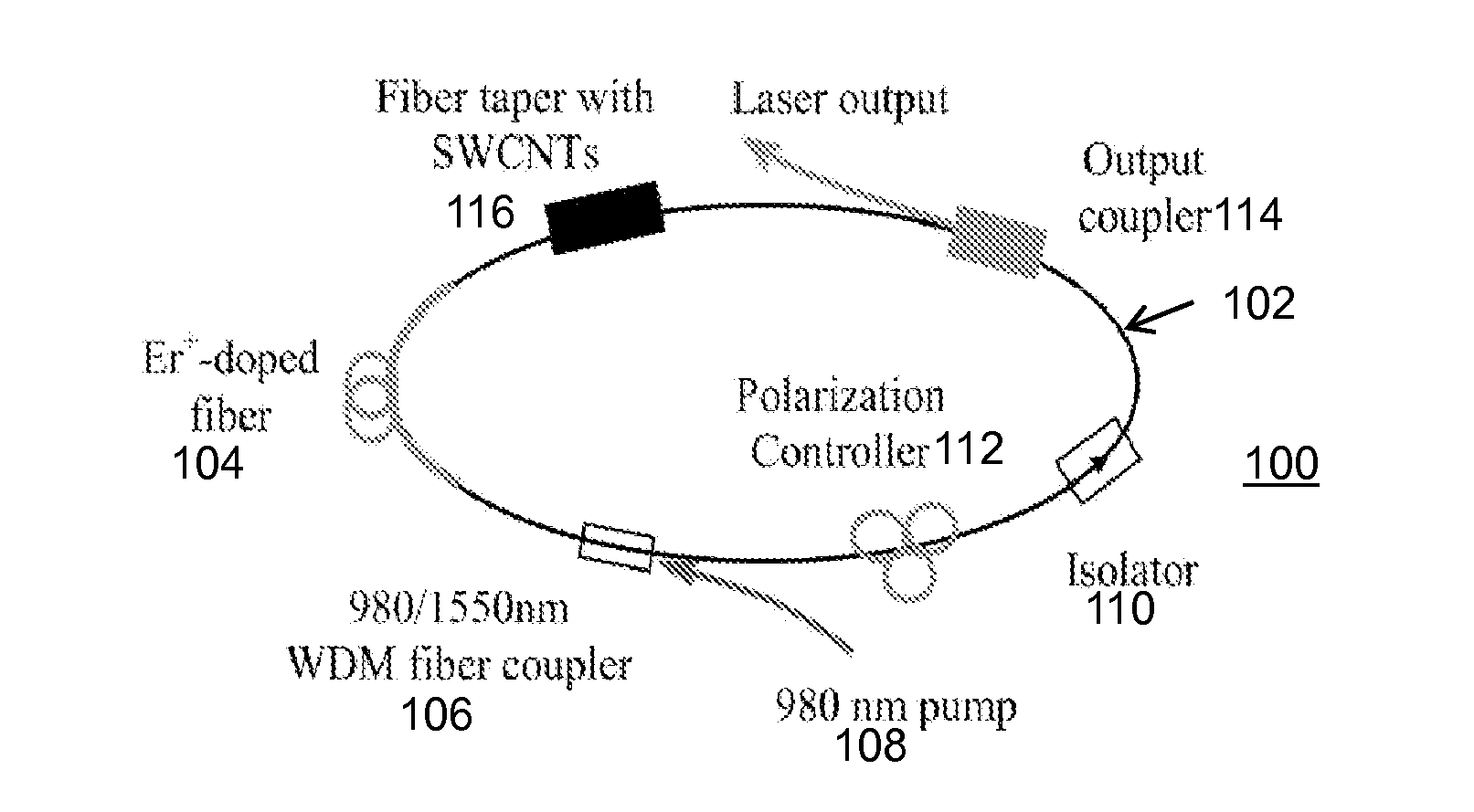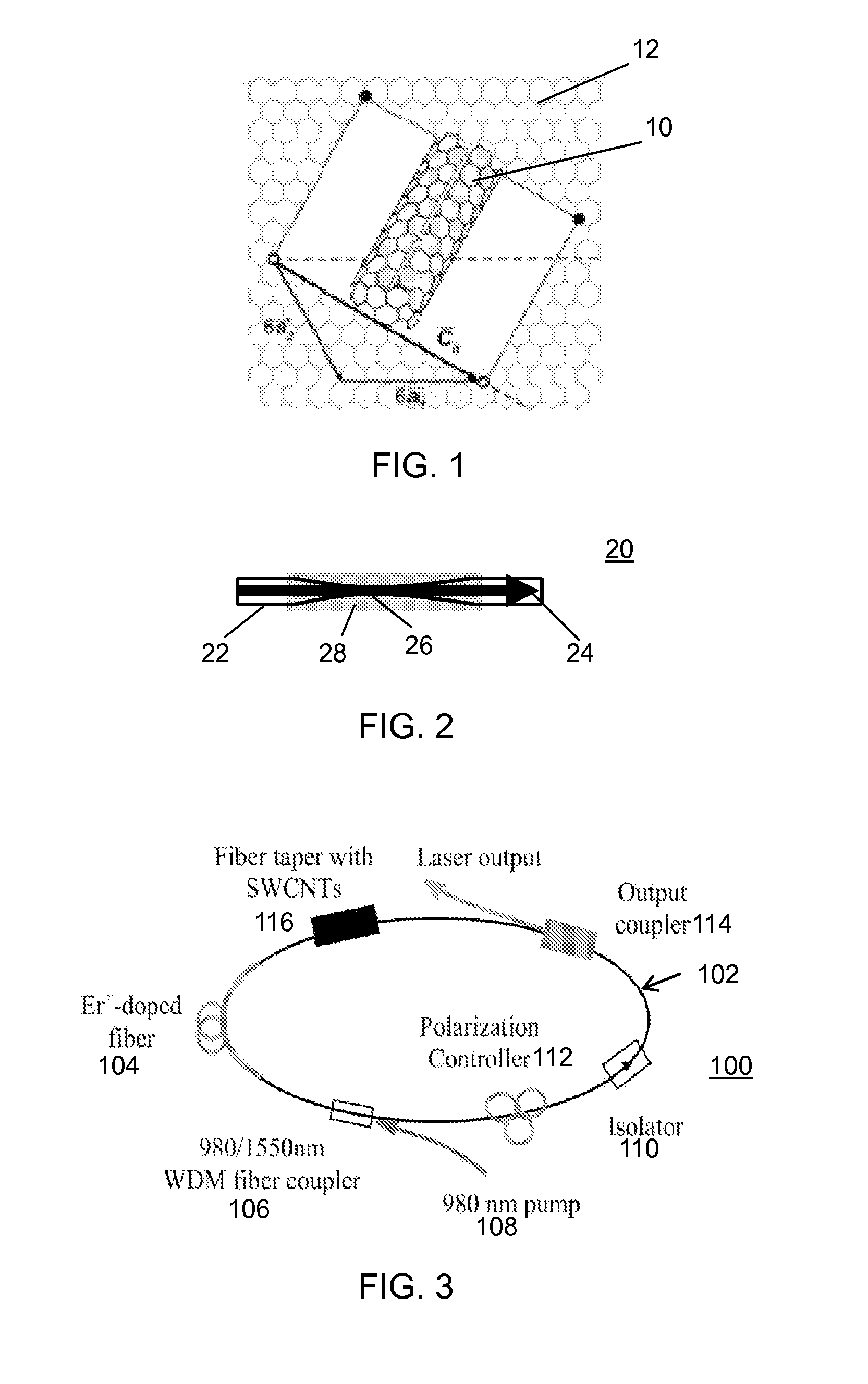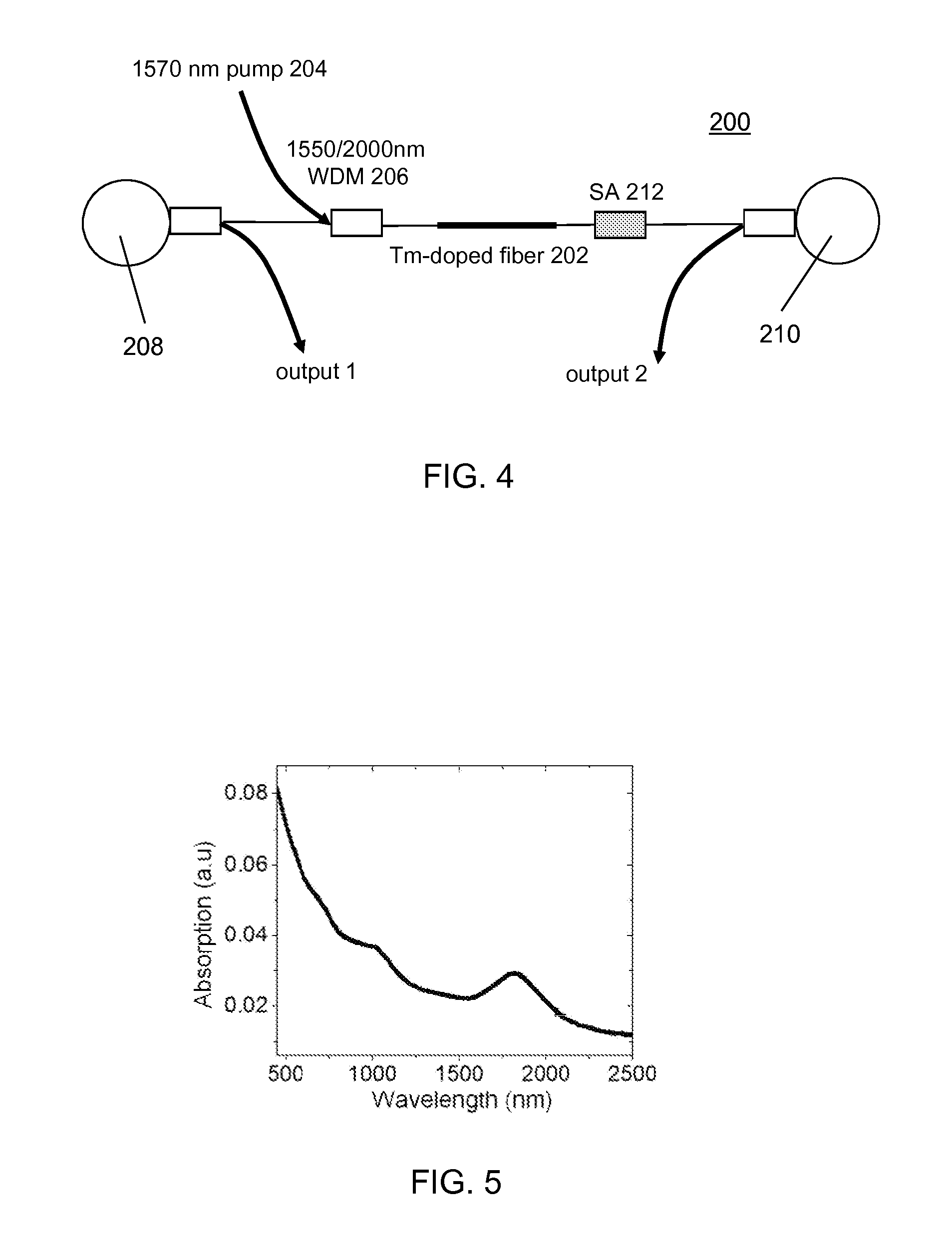Saturable absorber using a fiber taper embedded in a nanostructure/polymer composite and lasers using the same
a fiber taper and absorber technology, applied in the field of allfiber saturable absorbers, can solve the problems of reducing the advantages of an all-fiber format, complex and expensive devices of saturable absorbers, and the majority of proposed techniques, however, have unavoidable drawbacks, and achieve the effects of simple fabrication process, reliable operation, and large operating wavelength rang
- Summary
- Abstract
- Description
- Claims
- Application Information
AI Technical Summary
Benefits of technology
Problems solved by technology
Method used
Image
Examples
Embodiment Construction
[0027]With reference to FIG. 1, a single-walled carbon nanotube (SWCNT) 10 is illustrated. Typically, the SWCNT has a diameter of close to 1 nanometer. The length can range from microns to millimeters. The structure of a SWCNT can be conceptualized by wrapping a one-atom-thick sheet of carbon atoms 12 called graphene into a seamless cylinder. In experiments used to verify the operability of the subject invention, commercially available SWCNTs made by a high pressure CO process are used, and they are mixed (without any additional purification process) with a low-refractive-index silicone elastomer, such as Polydimethylsiloxane made by Dow Corning, using standard magnetic stirring for 24 hours.
[0028]To test the absorption spectrum of SWCNTs, a solution of SWCNTs in alcohol was prepared and sprayed on a microscope slide; the absorption spectrum of the SWCNTs was then measured using a spectrometer. An analysis of the absorption spectrum of SWCNTs with approximately 1.2-nm diameter shows...
PUM
 Login to View More
Login to View More Abstract
Description
Claims
Application Information
 Login to View More
Login to View More - R&D
- Intellectual Property
- Life Sciences
- Materials
- Tech Scout
- Unparalleled Data Quality
- Higher Quality Content
- 60% Fewer Hallucinations
Browse by: Latest US Patents, China's latest patents, Technical Efficacy Thesaurus, Application Domain, Technology Topic, Popular Technical Reports.
© 2025 PatSnap. All rights reserved.Legal|Privacy policy|Modern Slavery Act Transparency Statement|Sitemap|About US| Contact US: help@patsnap.com



